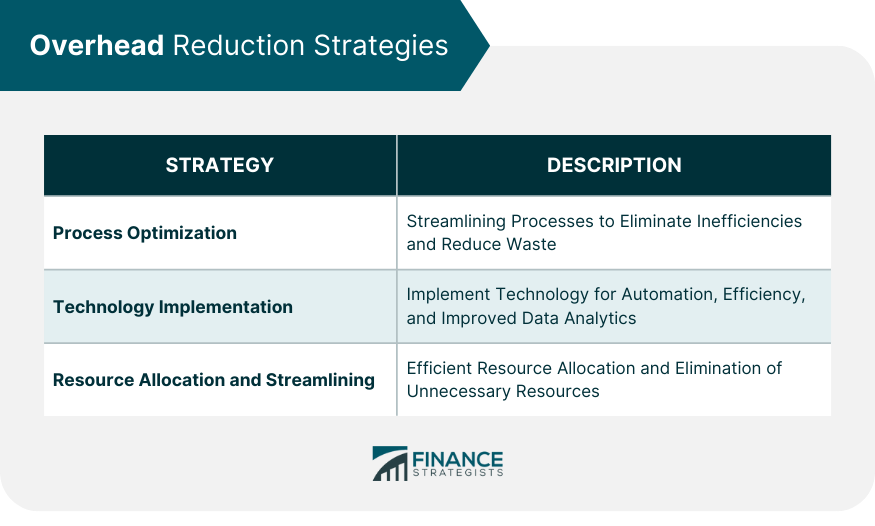What is Overhead Reduction? Explanation and Benefits
Overhead Reduction is a cost management strategy essential for SaaS companies to improve efficiency and profitability by minimizing unnecessary overhead expenses. This article outlines its significance, benefits, implementation strategies, common pitfalls, and ways to measure success.
Overhead Reduction
In the fast-paced world of SaaS, managing costs is crucial for success. If you're like me, you might have had moments where expenses seemed to spiral out of control. But here’s the kicker: reducing overhead can lead to significant improvements in your bottom line.
What is Overhead Reduction?
Overhead reduction is all about cutting unnecessary expenses that don’t directly contribute to your product or service. Think of it as trimming the fat on your budget. These expenses can include things like office space, utilities, and even certain employee costs. The goal? To streamline your operations and save money.

The Importance of Overhead Reduction in SaaS
Reducing overhead is vital for SaaS businesses. Software companies often face high operational costs. And in a competitive landscape, every dollar counts. By focusing on overhead reduction, you’re setting your company up for financial stability. Trust me, I've learned that freeing up cash flow can lead to more investment in innovative projects.
Benefits of Overhead Reduction for SaaS Providers
-
Increased Profit Margins: Cutting excessive costs can greatly improve your profitability. You get to keep more of what you earn.
-
Flexibility: A lean operation allows you to pivot quickly. Whether it’s adapting to market changes or investing in new features, reduced overhead gives you room to maneuver.
-
Employee Empowerment: When you involve your team in cost-cutting measures, you foster a culture of accountability. I remember when my team suggested changing our office layout to save on space—and it worked!
How to Implement Overhead Reduction Strategies
Ready to tackle your overhead? Here are some practical steps you can take:
-
Evaluate Your Expenses: Start by reviewing all costs. Identify which expenses are contributing to overhead.
-
Optimize Remote Work: Remote work can cut down expenses like rent and utilities. Make sure your team is equipped to work effectively from anywhere.
-
Outsource Non-Core Functions: Consider outsourcing tasks like payroll or IT support to save on salaries and facilities costs. It’s an effective way to focus on what you do best.
-
Leverage Technology: Use software tools that streamline operations. Automate repetitive tasks and reduce labor costs.
-
Engage Your Employees: Ask for their input on cost-saving ideas. Often, they can spot waste in areas you might overlook.
Common Pitfalls to Avoid in Overhead Reduction
It’s easy to stumble while implementing changes. Here are some pitfalls to watch out for:
-
Cutting Too Deep: Sometimes, reducing overhead means sacrificing quality. Always assess the impact on your services and ensure customer satisfaction remains a priority.
-
Ignoring Employee Morale: If employees feel overworked due to cuts, it can lead to higher turnover. Communication is key to keeping morale up.
-
Neglecting to Monitor Changes: After implementing changes, keep an eye on their impact. Are expenses moving in the right direction? Check frequently and adjust as needed.
Measuring the Success of Overhead Reduction Efforts
You can’t manage what you don’t measure. Set clear metrics to evaluate your success. Focus on key performance indicators like:
- Cost Savings: Track the reduction in overhead costs over time.
- Profit Margins: Measure changes in profitability alongside your cost-cutting efforts.
- Employee Productivity: Ensure your strategies don’t negatively affect output. Happy employees often lead to better results.
Conclusion: Making Overhead Reduction Work for You
To be honest, navigating overhead reduction can be challenging. But with the right strategies in place, you can transform your SaaS business. Focus on identifying inefficiencies, engaging your team, and monitoring results. Be proactive rather than reactive.
If you really want to dive deep into the process, check out this video on reducing overhead costs sustainably. It might spark some ideas for your organization!
Overall, mastering overhead reduction is about being smart with your resources. By cutting unnecessary costs, you not only improve your financial health but also pave the way for future growth.